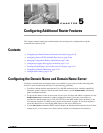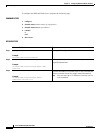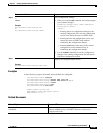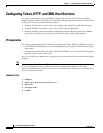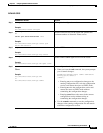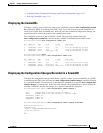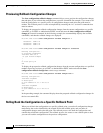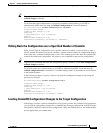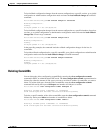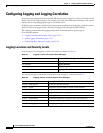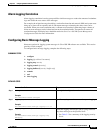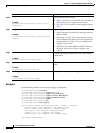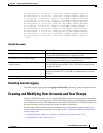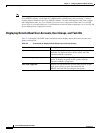
CHAPTER
5-103
Cisco IOS XR Getting Started Guide
OL-14361-01
5
Configuring Additional Router Features
This chapter contains instructions and information for entering basic configurations using the
command-line interface (CLI).
Contents
• Configuring the Domain Name and Domain Name Server, page 5-103
• Configuring Telnet, HTTP, and XML Host Services, page 5-106
• Managing Configuration History and Rollback, page 5-108
• Configuring Logging and Logging Correlation, page 5-114
• Creating and Modifying User Accounts and User Groups, page 5-117
• Configuring Software Entitlement, page 5-121
• Configuration Limiting, page 5-121
Configuring the Domain Name and Domain Name Server
Configure a domain name and domain name server (DNS) for your router to make contacting other
devices on your network more efficient. Use the following guidelines:
• To define a default domain name that the Cisco IOS XR software uses to complete unqualified
hostnames (names without a dotted-decimal domain name), use the domain-name command in
global configuration mode.
• To specify the address of one or more name servers to use for name and address resolution, use the
domain name-server command in global configuration mode. If no name server address is
specified, the default name server is 255.255.255.255 so the DNS lookup can be broadcast to the
local network segment. If a DNS server is in the local network, it replies. If not, there might be a
server that knows how to forward the DNS request to the correct DNS server.
• Use the show hosts command in EXEC mode to display the default domain name, the style of name
lookup service, a list of name server hosts, and the cached list of hostnames and addresses.



